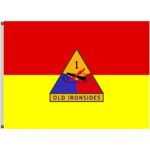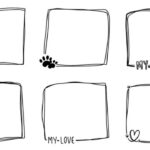I. Introduction to Upcycling: The Art of Transforming Second-Hand Clothes
II. Creative Techniques for Upcycling: From Basic Repairs to High-Fashion Designs
III. Essential Tools and Materials for Your DIY Upcycling Projects
Introduction to Upcycling: The Art of Transforming Second-Hand Clothes
Have you ever looked at a pile of old clothes and thought, “These could really use a makeover!”? If so, you’re in good company! Upcycling is not just a trend; it’s an artistic movement that transforms second-hand garments into unique, fashionable pieces. Let’s dive into the vibrant world of upcycling and discover how you can turn forgotten textiles into treasures!
What is Upcycling?
At its core, upcycling is about taking things that are no longer used or wanted and giving them a new lease on life. Unlike traditional recycling, which often breaks materials down to create something entirely different, upcycling focuses on enhancing the original item. With a bit of creativity, your old jeans can become a stylish bag, or a faded T-shirt can be transformed into a chic wall hanging!
Why Upcycle?
- Environmental Benefits: Upcycling helps reduce waste, keeping textiles out of landfills and minimizing the demand for new resources.
- Cost-Effective: Instead of spending a fortune on new clothes, you can refresh your wardrobe at little to no cost.
- Unique Style: Upcycled garments are one-of-a-kind. You won’t have to worry about showing up in the same outfit as anyone else!
- Creative Outlet: Upcycling allows you to express your creativity and develop new skills in sewing, design, and craftsmanship.
The Joy of Personalization
One of the most delightful aspects of upcycling is the ability to infuse your personality into your creations. You can choose colors, patterns, and styles that resonate with you. Whether you love bohemian vibes or sleek minimalism, upcycling allows you to create something that represents your unique taste. Plus, it’s incredibly satisfying to wear an outfit that you’ve made with your own hands!
Getting Started with Upcycling
If you’re new to the world of upcycling, don’t worry! Getting started is easier than you might think. You can begin with simple projects and gradually build your skills. The beauty of upcycling is that it doesn’t require perfect execution; the imperfections often add character to your creations. Here are a few tips to get you started:
- Start Small: Choose a simple project, like turning an oversized shirt into a fitted crop top.
- Gather Supplies: Make sure you have some basic sewing supplies, like needles, thread, and scissors.
- Be Fearless: Don’t be afraid to experiment! The process is all about creativity and exploration.
- Seek Inspiration: Browse social media platforms like Pinterest and Instagram for upcycling ideas and tutorials.
Final Thoughts
Upcycling is more than just a creative hobby; it’s a lifestyle choice that encourages sustainability and individuality. So, the next time you’re tempted to toss out old clothes, take a moment to envision the possibilities. Who knows? You might just create your next favorite outfit!
Creative Techniques for Upcycling: From Basic Repairs to High-Fashion Designs
Upcycling is more than just a trend; it’s a wonderful opportunity to breathe new life into second-hand clothes. Whether you’re a seasoned DIY enthusiast or a curious beginner, there are countless creative techniques you can explore. Let’s dive into some of the most engaging methods to transform those forgotten garments into stylish pieces that reflect your personality!
1. Basic Repairs: The Foundation of Upcycling
Before we get into the more elaborate transformations, it’s important to start with the basics. Simple repairs can work wonders in reviving your wardrobe. Here are some easy techniques:
- Patchwork: Use fabric scraps to create fun patches on torn areas. Not only does this hide imperfections, but it also adds a unique flair to your items.
- Sewing Buttons: Lost a button? Don’t toss the garment! Replace it with a quirky button that can act as a statement piece.
- Hem Alterations: If a dress is too long or jeans are dragging, a simple hem can change the whole silhouette. And don’t worry about perfection; a raw edge can add a trendy touch!
2. Creative Cutting: Transforming Silhouettes
Once you’ve mastered the basics, it’s time to get a little adventurous. Creative cutting can dramatically change the look of your clothes:
- Crop It: Turn an oversized shirt into a chic crop top. Just cut off the bottom and hem it slightly for a polished finish!
- Fringe it: Give new life to an old skirt or denim by cutting strips along the hem. Fringing adds texture and a boho vibe.
- Turn Pants into Shorts: This is especially great for warmer months. Cut your pants to the desired length, and you’ve got a fresh new pair of stylish shorts.
3. Dyeing and Printing: Unleashing Your Creativity
If you want to add a splash of color or a unique pattern, consider dyeing or printing your fabrics:
- Natural Dyes: Explore using fruits, vegetables, or flowers to create eco-friendly dyes. Onion skins, for example, can give your clothes a beautiful golden hue.
- Screen Printing: If you’re up for it, screen printing can let you customize your clothing with your favorite designs. It’s easier than it sounds, and there are plenty of tutorials online!
- Tie-Dye Fun: This classic technique is making a comeback. Use rubber bands to secure sections of fabric, then apply dye in creative patterns.
4. Accessorizing: The Finishing Touch
Once you’ve transformed your garments, consider accessorizing to elevate your look:
- Fabric Scrap Jewelry: Use leftover fabric to craft unique accessories like earrings or bracelets.
- Brooches and Pins: Create or repurpose fabric brooches to pin on your newly upcycled items.
- Layering: Don’t forget about how you wear your pieces! Layering different upcycled items can create an entirely new look.
So, are you ready to get started on your upcycling adventure? Remember, the goal is to have fun and express your creativity. Each piece you create is not just clothing; it’s a representation of your unique style and resourcefulness!
Essential Tools and Materials for Your DIY Upcycling Projects
So, you’re ready to dive into the wonderful world of upcycling! It’s a fantastic way to breathe new life into your second-hand clothes while also being environmentally conscious. But before you begin, let’s chat about the essential tools and materials you’ll need to make your DIY dreams a reality. Don’t worry; some of these may already be lurking in your home!
1. Sewing Tools
First things first, sewing is at the heart of most upcycling projects. Here’s what you’ll want to have on hand:
- Needles: A variety of sewing needles, including universal, denim, and hand-sewing needles.
- Thread: A rainbow of colors will allow you to match or contrast beautifully. Invest in some quality polyester thread for durability.
- Scissors: A sharp pair of fabric scissors is crucial. Don’t skimp here; they’ll make cutting much easier and neater!
- Measuring Tape: Accurate measurements can save you from a lot of frustration. A soft, flexible measuring tape is best for fabric.
- Seam Ripper: Mistakes happen—don’t fret! A seam ripper will help you undo any sewing mishaps without damaging your fabric.
2. Crafting Materials
Now that you have your sewing tools, let’s gather some crafting materials to really get your creativity flowing:
- Fabric Scraps: Keep an eye out for leftover fabric from previous projects. They can be perfect for patches or accessories!
- Buttons and Zippers: A collection of buttons and zippers adds flair and functionality to your upcycled pieces.
- Iron-on Transfers: Want to add some funky designs? Iron-on transfers are a quick way to get creative without a lot of fuss.
- Fabric Paints or Markers: Add personal touches with fabric paints or markers. Perfect for doodling or stenciling your own designs!
- Lace, Ribbons, and Trim: These little embellishments can take your project from basic to fabulous. They add character and style!
3. Safety Equipment
Alright, let’s not forget the importance of safety. Some projects might involve sharp tools or chemicals. Here’s what to keep in mind:
- Cut-Resistant Gloves: If you’re using scissors or knives for cutting, consider using cut-resistant gloves for extra protection.
- Safety Goggles: If your project involves cutting or sanding, safety goggles can shield your eyes from any flying debris.
- Masking Tape: Use it to secure fabric while cutting or painting, so you don’t accidentally snip more than you intended!
4. Workspace Setup
Your workspace can make all the difference in your upcycling journey. Here are a few tips to set up an inspiring and efficient area:
- Good Lighting: Natural light is ideal, but a bright desk lamp can work wonders, too.
- Organized Storage: Invest in bins or drawers to keep your tools and materials neatly organized. It saves time when you don’t have to dig through a mountain of supplies!
- Comfortable Seating: You might spend hours creating, so a comfy chair can keep your creativity flowing without discomfort.
With these tools and materials ready, you’re all set to embark on your upcycling adventures! Remember, the best part about upcycling is letting your personality shine through every stitch and snip. Happy upcycling!










Comments